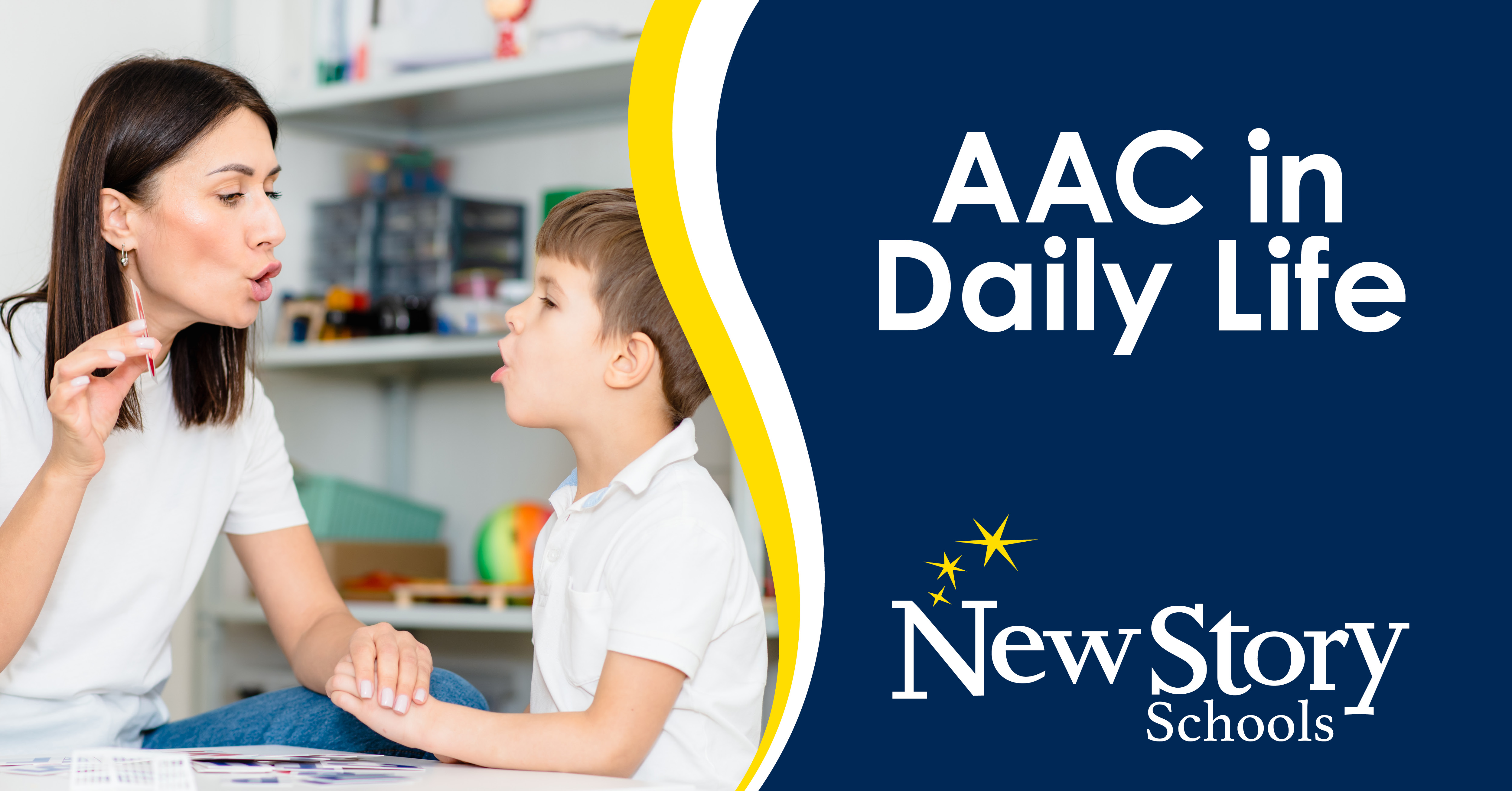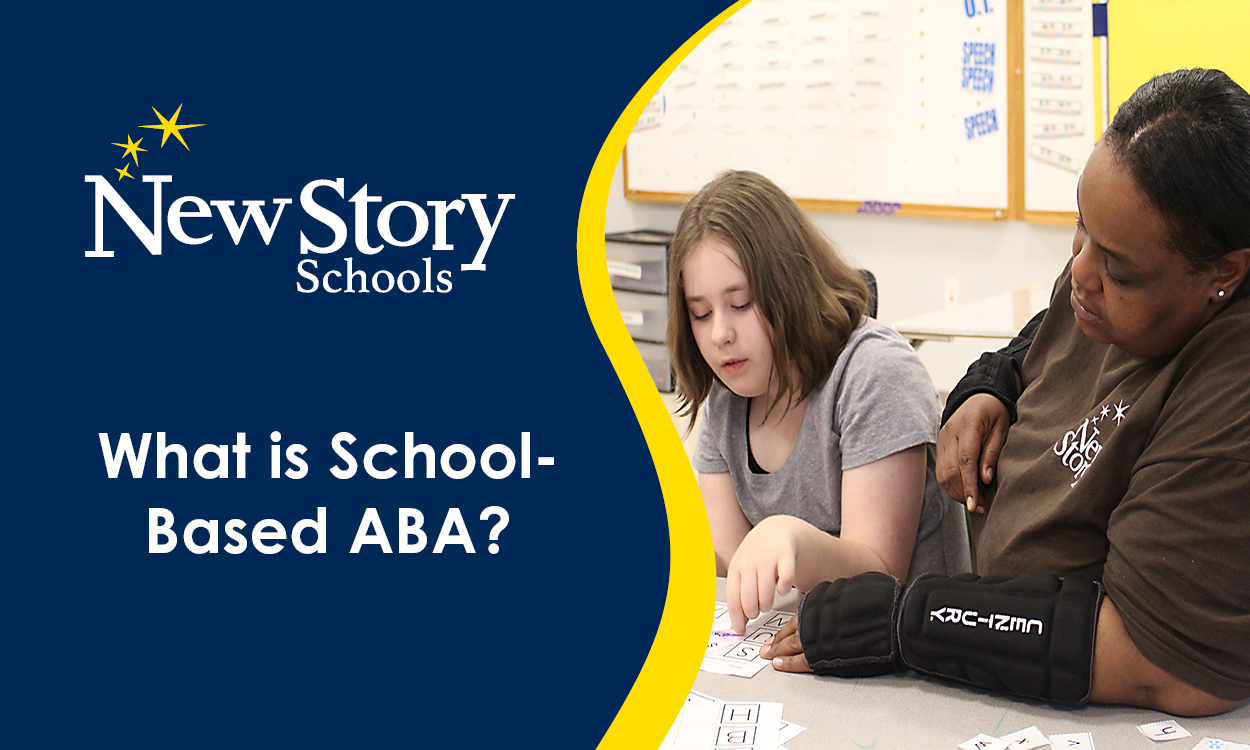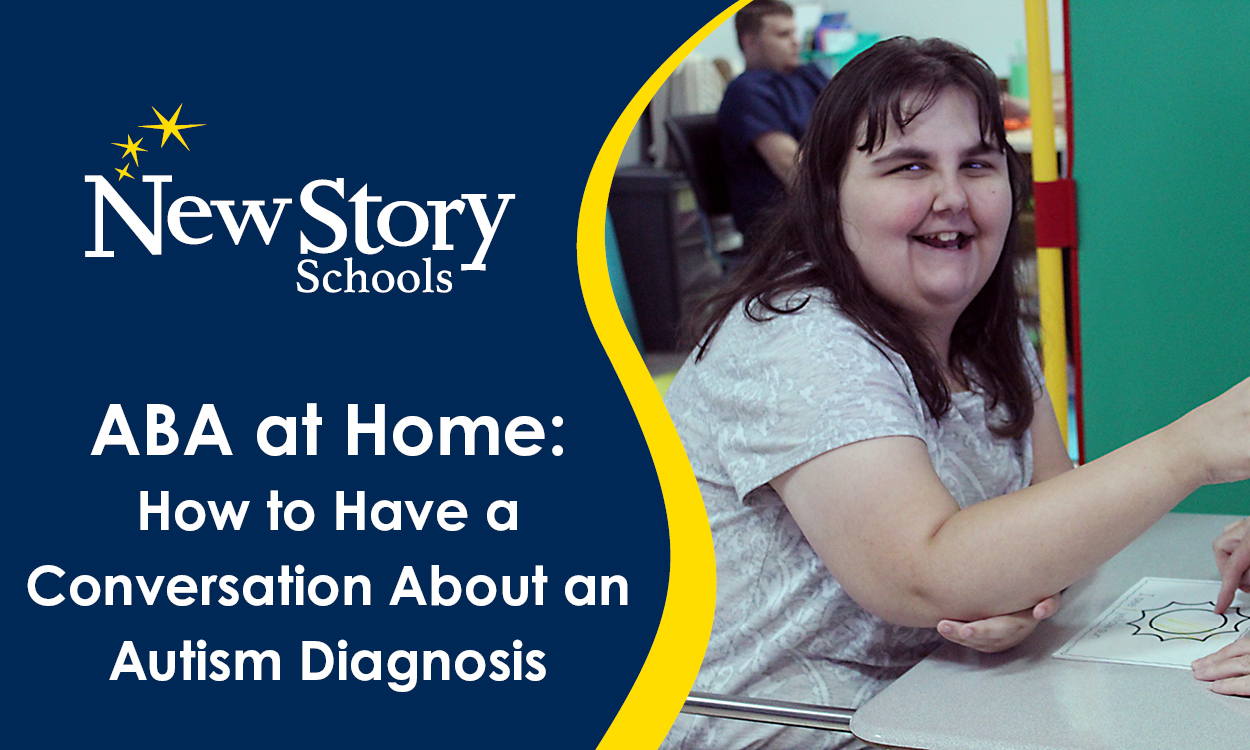AAC in Daily Life
Posted: December 06, 2021 | Written By: Jessica Walls, MS, CCC-SLP/L | Category: At Home Help

Humans are naturally social creatures with an innate need to connect with others. We express our need for seeking and fostering connections via different communication channels.
While a lot of people rely on speech to communicate, there are many individuals who are unable to do so. For those individuals that cannot rely on speech or other verbal cues, there are augmentative and alternative means of communication (AAC). You likely use AAC every day! Any time you point to an item you want or shrug your shoulders, you are using a form of AAC. However, there is a lot to understand about how to appropriately communicate with someone who uses AAC as their primary means of communication and honor their need for this support.
Let’s look at what communicating with someone via AAC can look like.
First, keep in mind that Augmentative and Alternative Communication can come in both unaided and aided methods. Unaided communication methods include the use of body language like gestures, facial expressions, and sign language. Aided communication methods include the use of external items to assist with communication (i.e. picture boards, speech output buttons, and voice generating devices).
While various methods of AAC help non-verbal individuals communicate and connect with others, in a world that heavily relies on verbal communication, there are still several barriers in place that hinder equality.
Picture this scenario:
You wake up and your communication device or “voice” isn’t charged. You can’t tell anyone “Good morning”, choose what you want to wear, or what you want for breakfast. With the use of gestures, you point and become frustrated when your mom asks question after question trying to figure out that you wanted to wear the green shirt and eat cheerios. You are finally ready for school and your “voice” has enough battery to turn on, so it’s put into your backpack and you get on the bus. You don’t get to say “Hello” to your driver or your friends because your device is stored in your backpack. The other kids are asking you if your favorite part of school is lunch or recess, but you can’t answer them with your voice. They begin to leave you out of the conversation because you can’t respond.
At school, the communication barriers continue. Your teacher asks the class a question and you raise your hand. She calls on you and you get to use your voice device to answer her yes/no question. You feel proud of yourself and happy because you had the chance to participate. She asks another question, but this time it’s not a simple yes/no and your device doesn’t have a button that fits the question, so you sit and wait for someone else to answer. The student beside you answers incorrectly, and in your head you think, “Ugh, the answer is _____.” But you can’t tell anyone.
And these barriers continue! At lunch, you must point to what you want so helpers can guess what you’d like to eat. If they don’t guess correctly, perhaps you’re embarrassed at holding up the line so you take the gross green beans.
Maybe your device dies again, or you must leave it behind. The other kids don’t try to interact with you if they see you without your device, which makes you lonely. Perhaps all of this makes you frustrated and you throw your device on the floor, which earns you some extra attention from the class. Now you can add embarrassed to a long list of feelings!
The aid removes you from the room and takes you down to the office to call your mom. You can’t tell anyone why you’re upset, because your device is off.
When Mom comes, you start to cry. Mom starts asking a million questions about why you’re upset, which makes everything worse because the questions are overwhelming, and your gestures aren’t enough for her to understand.
This can be daily life for a non-verbal individual, and the feelings of wishing someone could understand their thoughts or wishing they could be included are a strong reality. Augmentative and Alternative Communication can be tailored to work for every individual, regardless of ability or age, but only works effectively when taught correctly and honored by all listening participants.
As our world becomes more technologically advanced, speech-generating devices are becoming more readily available, opening the door to a place that was once very lonely for many people. If you see someone with a speech-generating device, or using other methods of AAC, include them just as you would anyone else.
Want to be notified of new articles and resources from New Story Schools? Submit your email and opt into our newsletter!









